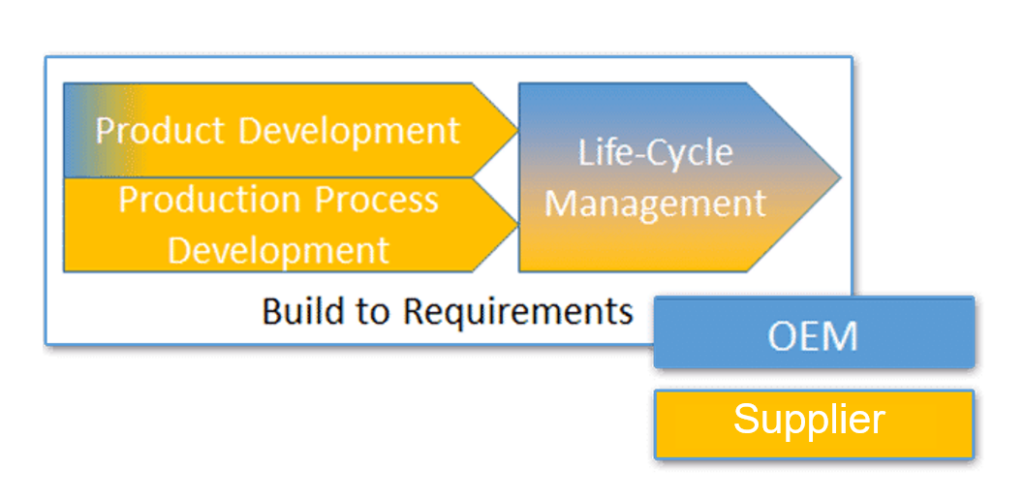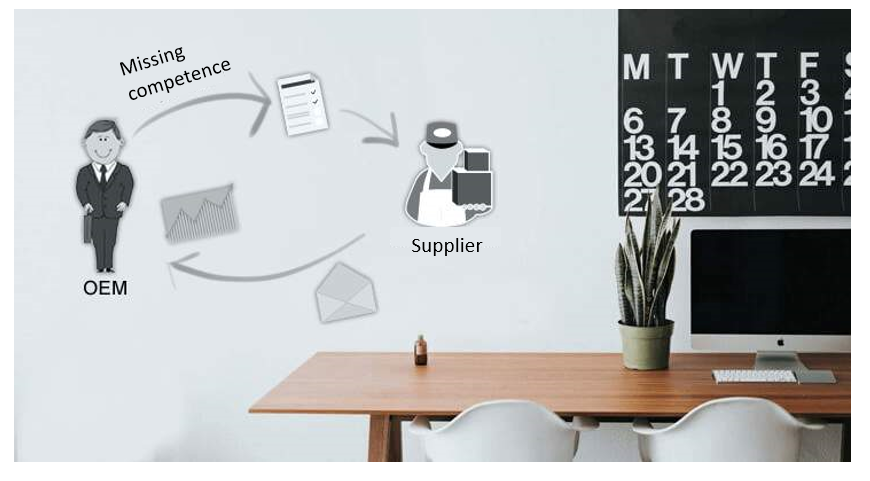About the model
Introduction Build to Requirements
With Build to Requirements the OEM will outsource on a basis of a list of product requirements. When there are very innovative developments the OEM and supplier will work in close cooperation. The supplier will prove that the newly developed product meets the requirements. These lists of requirements can consist, but are not limited to: quality, delivery reliability and costs.

In that case the supplier will work in close cooperation with the manufacturer, inside or outside the organisation of the supplier. The OEM and supplier will come to agreements about the different aspects about the Life-Cycle Management of the product.
Characteristics of the model
Time to market
If an OEM itself has insufficient competentions or people to develop the product, this model can help improve to introduce the product in the market quicker. The alternative, building these competentions yourself, can be very time consuming.

Quality
Quality – The use of experienced developers of the supplier helps to develop a product that meets the desired quality requirements.

Total Cost of Ownership
Total Cost of Ownership – the costs of the developers of the supplier will most of the time be higher than in-house developers. This has to be compensated by a quicker time to market, higher quality and flexibility in the use of these developers.

Organisation
Organisation – the cooporation in this model is often very complex. Many disciplines will interact in the development proces, production and possibly life-cycle management. Therefore, it is recommended that this model is shaped in an alliance.


